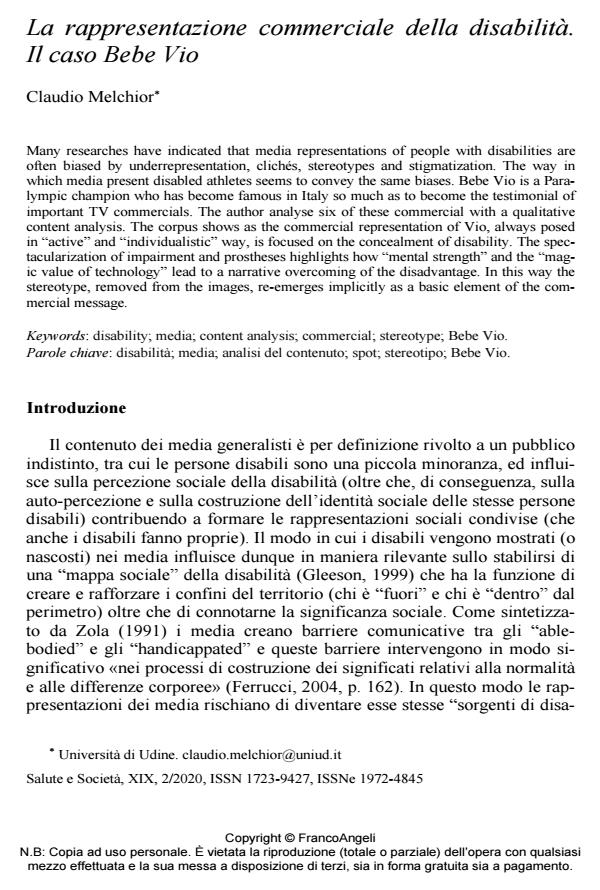La rappresentazione commerciale della disabilità. Il caso Bebe Vio
Journal title SALUTE E SOCIETÀ
Author/s Claudio Melchior
Publishing Year 2020 Issue 2020/2
Language Italian Pages 15 P. 121-135 File size 170 KB
DOI 10.3280/SES2020-002009
DOI is like a bar code for intellectual property: to have more infomation
click here
Below, you can see the article first page
If you want to buy this article in PDF format, you can do it, following the instructions to buy download credits

FrancoAngeli is member of Publishers International Linking Association, Inc (PILA), a not-for-profit association which run the CrossRef service enabling links to and from online scholarly content.
Many researches have indicated that media representations of people with disabilities areoften biased by underrepresentation, clichés, stereotypes and stigmatization. The way inwhich media present disabled athletes seems to convey the same biases. Bebe Vio is a Paralympicchampion who has become famous in Italy so much as to become the testimonial ofimportant TV commercials. The author analyse six of these commercial with a qualitativecontent analysis. The corpus shows as the commercial representation of Vio, always posedin "active" and "individualistic" way, is focused on the concealment of disability. The spectacularizationof impairment and prostheses highlights how "mental strength" and the "magicvalue of technology" lead to a narrative overcoming of the disadvantage. In this way thestereotype, removed from the images, re-emerges implicitly as a basic element of the commercialmessage.
Keywords: Disability; media; content analysis; commercial; stereotype; Bebe Vio.
Claudio Melchior, La rappresentazione commerciale della disabilità. Il caso Bebe Vio in "SALUTE E SOCIETÀ" 2/2020, pp 121-135, DOI: 10.3280/SES2020-002009